
New Zealand - South Island
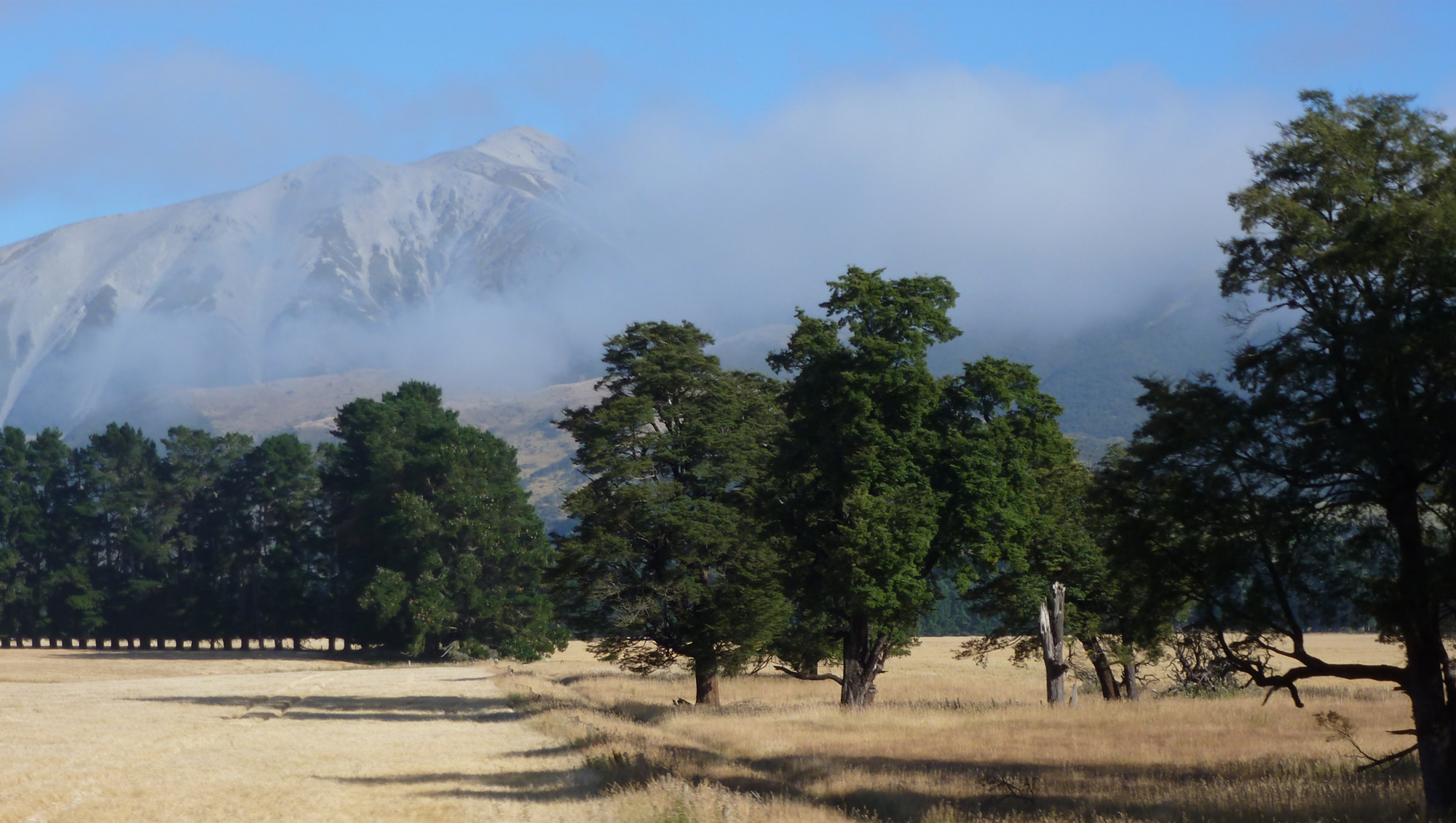
The Southern Alps is a mountain range extending along much of the length of New Zealand's South Island, reaching its greatest elevations near the island's western side. The term "Southern Alps" generally refers to the entire range, although separate names are given to many of the smaller ranges that form part of it.
The range includes the South Island's Main Divide, which separates the water catchments of the more heavily populated eastern side of the island from those on the west coast. Politically, the Main Divide forms the boundary between the Canterbury and West Coast Regions.
New Zealand - South Island
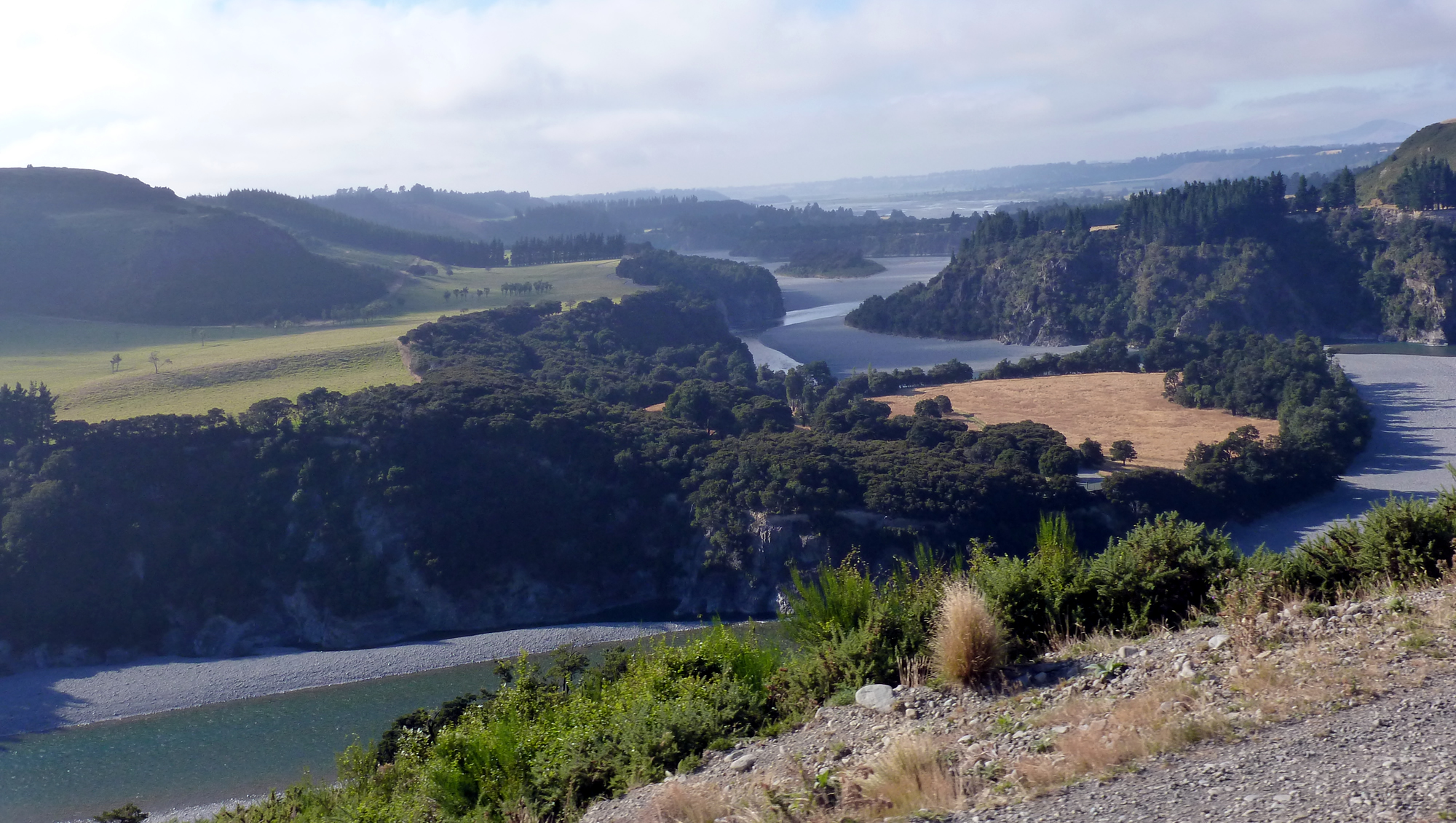
The TranzAlpine is a passenger train operated by KiwiRail Scenic Journeys in the South Island of New Zealand over the Midland Line; often regarded to be one of the world's great train journeys for the scenery through which it passes. The journey is 223 kilometres one-way, taking about four and a half hours. There are 19 tunnels and four viaducts, with the Staircase Viaduct being 73 metres high.
New Zealand - South Island
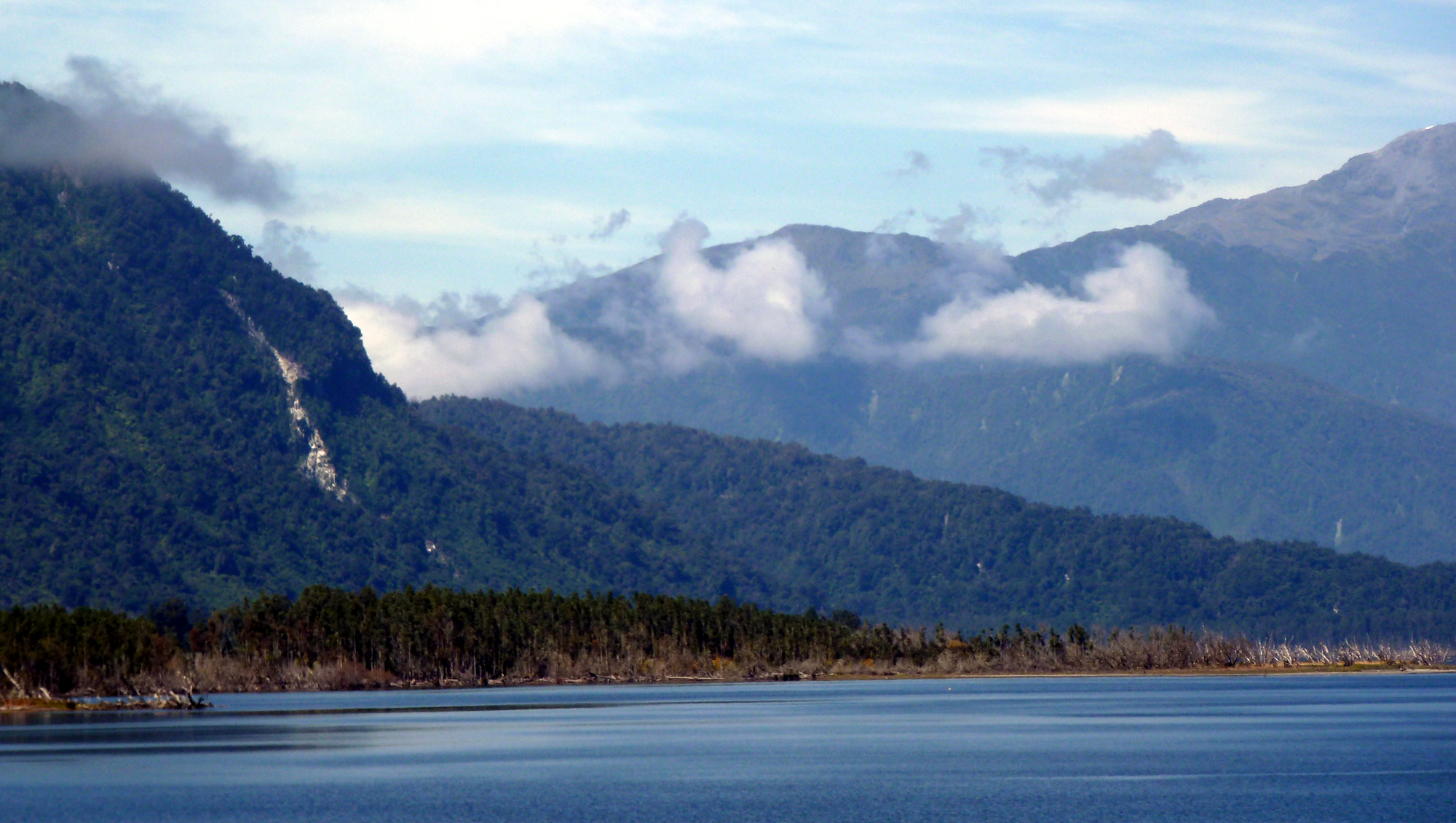
Lake Brunner is the largest lake in the northwestern South Island of New Zealand, covering an area of 40 km 2. The lake's outflow is the Arnold River, a tributary of the Grey River. The lake lies 31 kilometres to the southeast of Greymouth. The main settlement close to the lake is Moana, on the northern shore.
Located several kilometres inland from the coast road (State Highway 6), it is less frequently visited by tourists than many of the West Coast's scenic highlights, but it is becoming increasingly popular, in part due to its reputation for fishing.
Lake Brunner was named by John Rochfort for the 19th century explorer Thomas Brunner. The Māori name for the lake, Kotuku moana, means "Sea of herons".
New Zealand - South Island
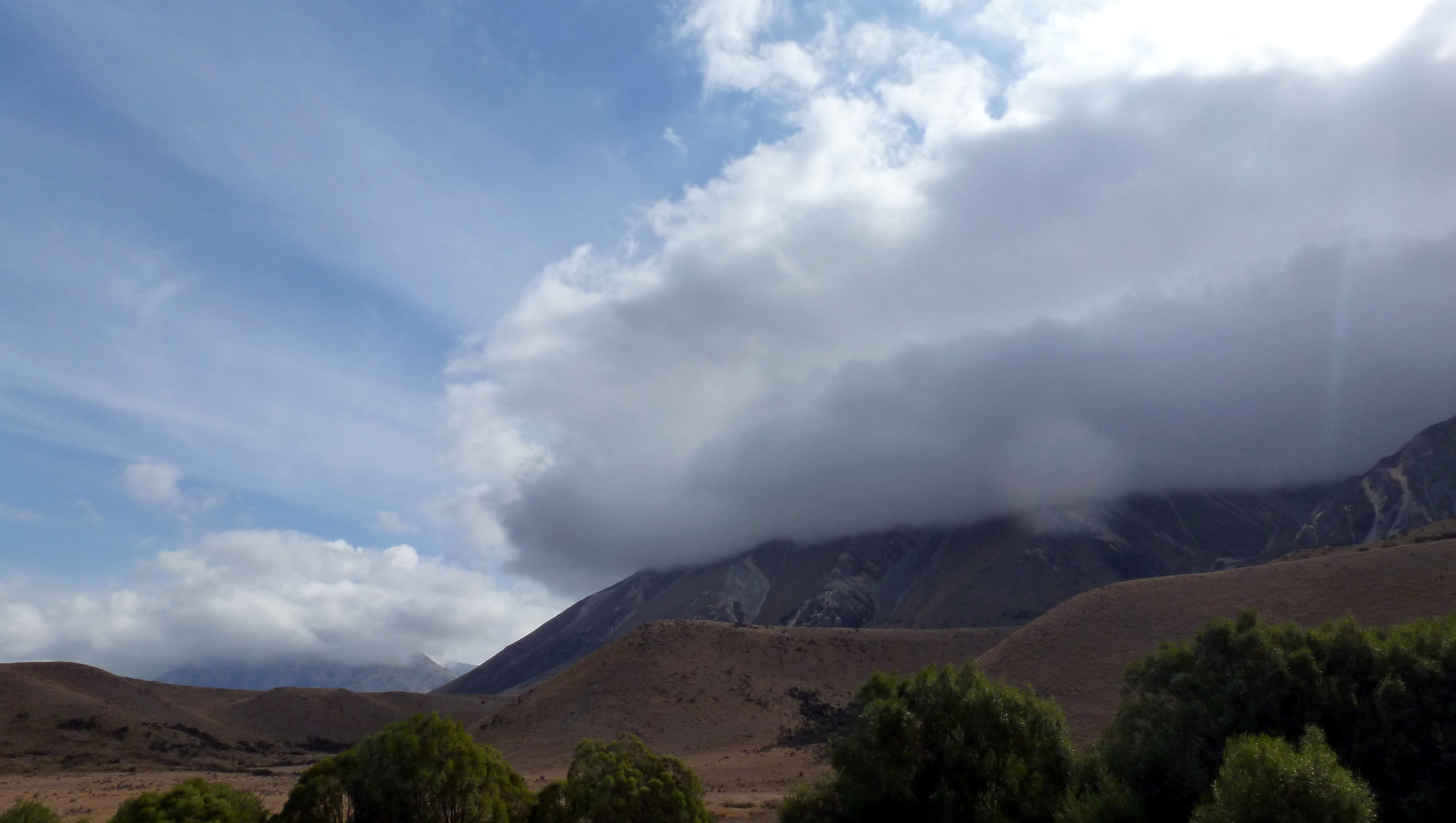
The Southern Alps is a mountain range extending along much of the length of New Zealand's South Island, reaching its greatest elevations near the island's western side. The term "Southern Alps" generally refers to the entire range, although separate names are given to many of the smaller ranges that form part of it.
The range includes the South Island's Main Divide, which separates the water catchments of the more heavily populated eastern side of the island from those on the west coast. Politically, the Main Divide forms the boundary between the Canterbury and West Coast Regions.
New Zealand - South Island
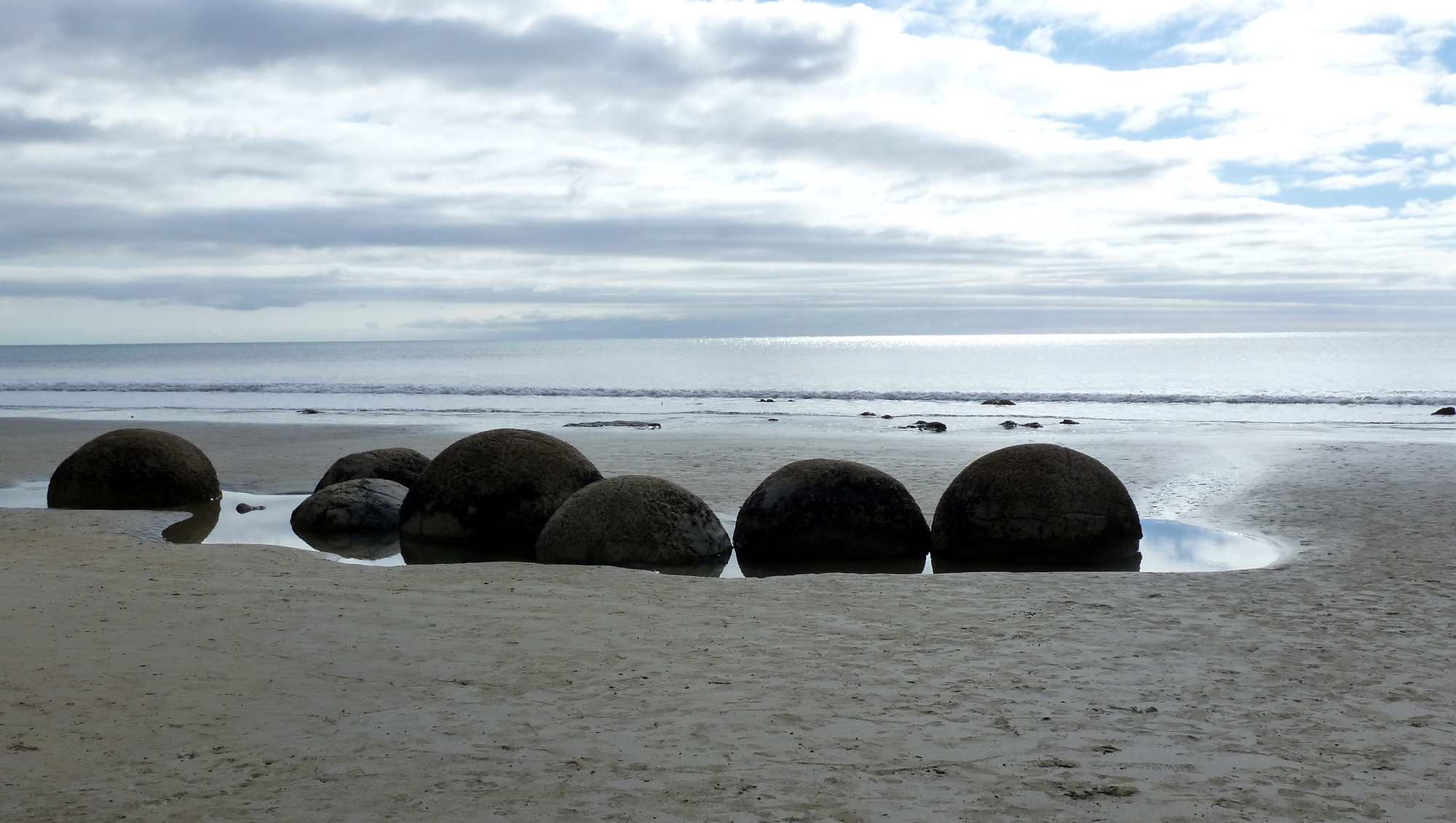
The Moeraki Boulders are unusually large and spherical boulders lying along a stretch of Koekohe Beach on the wave-cut Otago coast of New Zealand between Moeraki and Hampden. They occur scattered either as isolated or clusters of boulders within a stretch of beach where they have been protected in a scientific reserve. The erosion by wave action of mudstone, comprising local bedrock and landslides, frequently exposes embedded isolated boulders. These boulders are grey-colored septarian concretions, which have been exhumed from the mudstone enclosing them and concentrated on the beach by coastal erosion.
Local Māori legends explained the boulders as the remains of eel baskets, calabashes, and kumara washed ashore from the wreck of Arai-te-uru, a large sailing canoe. This legend tells of the rocky shoals that extend seaward from Shag Point as being the petrified hull of this wreck and a nearby rocky promontory as being the body of the canoe's captain. In 1848 W.B.D. Mantell sketched the beach and its boulders, more numerous than now. The picture is now in the Alexander Turnbull Library in Wellington. The boulders were described in 1850 colonial reports and numerous popular articles since that time. In more recent times they have become a popular tourist attraction, often described and pictured in web pages and tourist guides.
New Zealand - South Island
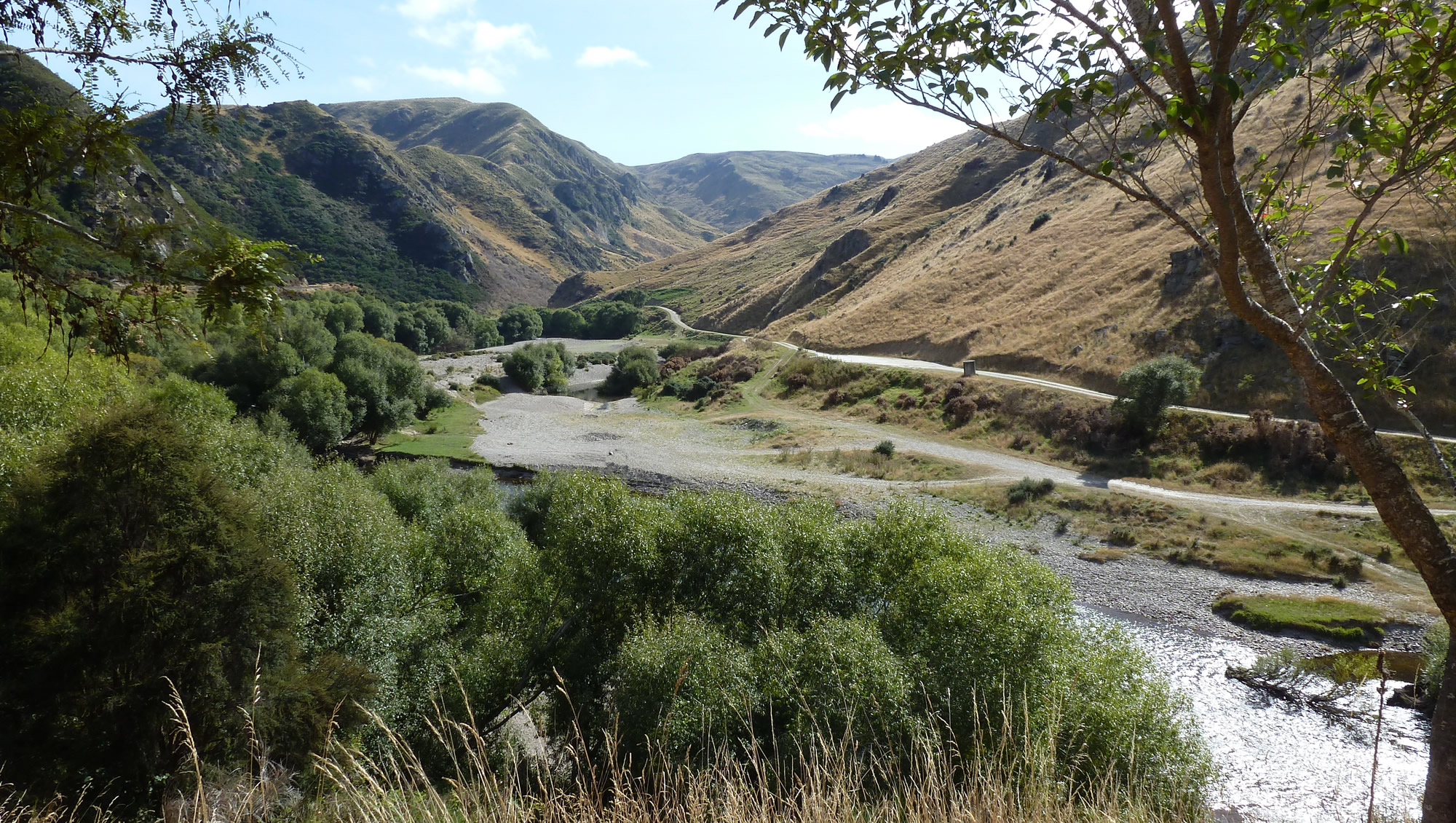
The Taieri Gorge Limited is New Zealand's longest tourist railway and stretches along the former Otago Central Railway from the 4 km peg on the Taieri Branch, 18 km west of Dunedin, to Middlemarch, a distance of some 60 kilometres. Between Dunedin and the start of the line its trains operate on KiwiRail's Main South Line via a running rights agreement.
The line travels through spectacular scenery along the banks of the Taieri River, through numerous tunnels and climbing along the Taieri Gorge to the Strath Taieri. It crosses a dozen viaducts, including the southern hemisphere's largest wrought iron structure, and passes through ten tunnels.
New Zealand - South Island
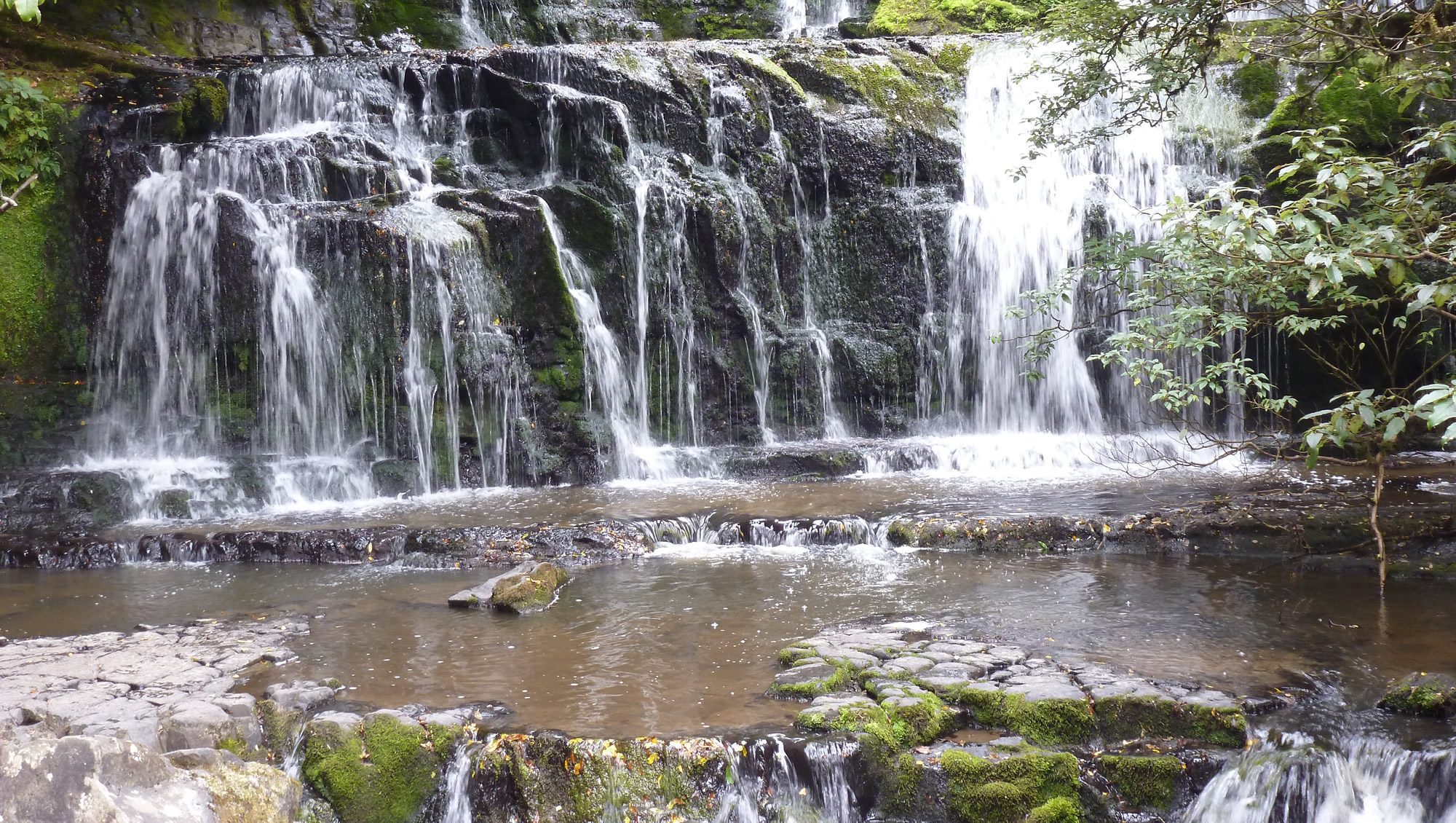
The Purakaunui Falls are a cascading three-tiered waterfall on the Purakaunui River, in The Catlins of the southern South Island of New Zealand. As one of very few South Island waterfalls away from the alpine region, it has long been a popular destination and photographic subject.
The falls are an iconic image for The Catlins region, and were featured on a New Zealand postage stamp in 1976.
New Zealand - South Island
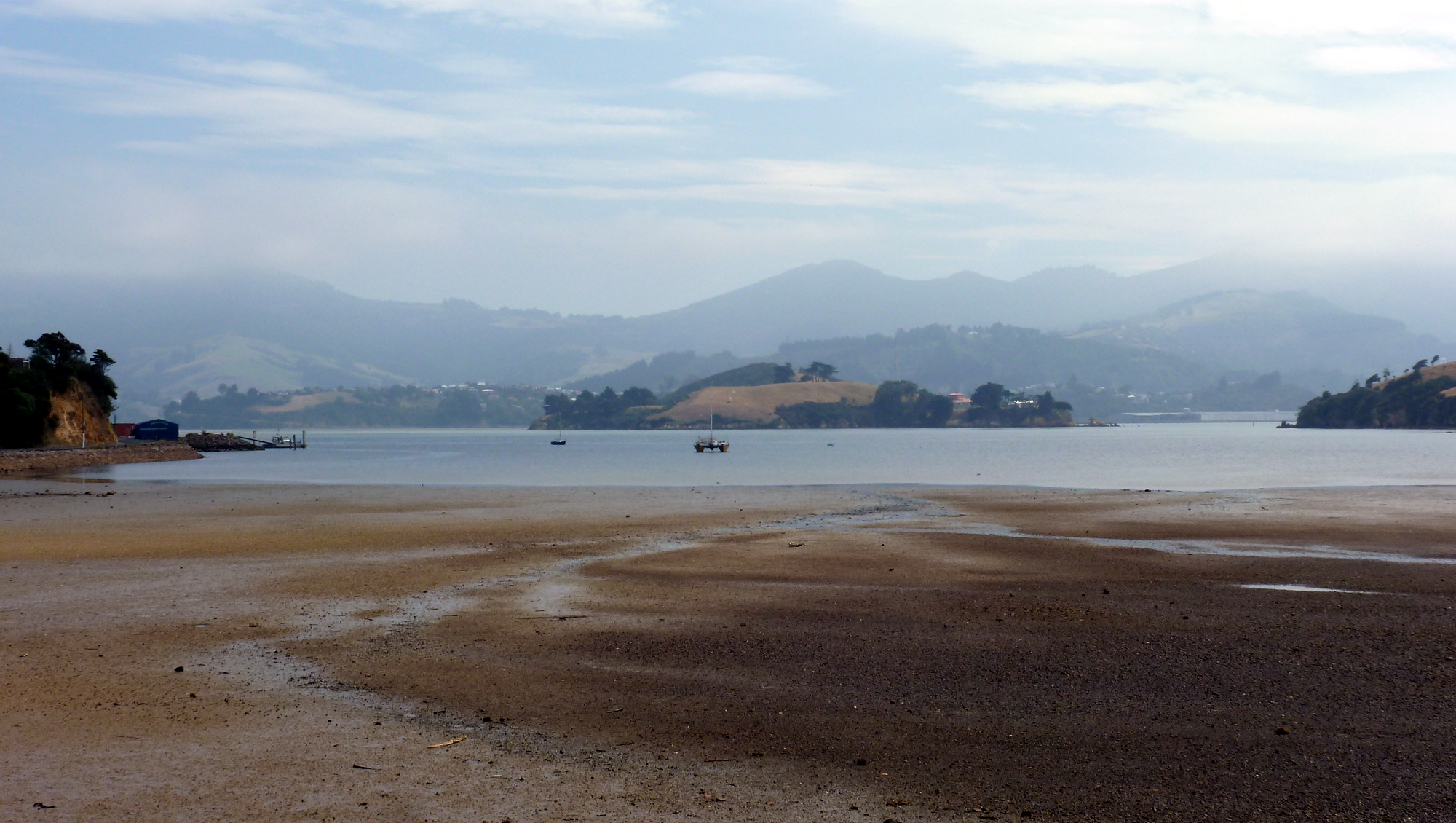
The Otago Peninsula is a long, hilly indented finger of land that forms the easternmost part of Dunedin, New Zealand. Volcanic in origin, it forms one wall of the eroded valley that now forms Otago Harbour. The peninsula lies south-east of Otago Harbour and runs parallel to the mainland for 20 km, with a maximum width of 9 km. It is joined to the mainland at the south-west end by a narrow isthmus about 1.5 km wide.
The suburbs of Dunedin encroach onto the western end of the peninsula, and seven townships and communities lie along the harbourside shore. The majority of the land is sparsely populated and occupied by steep open pasture. The peninsula is home to many species of wildlife, notably seabirds, pinnipeds, and penguins, and several ecotourism businesses operate in the area.
Australia
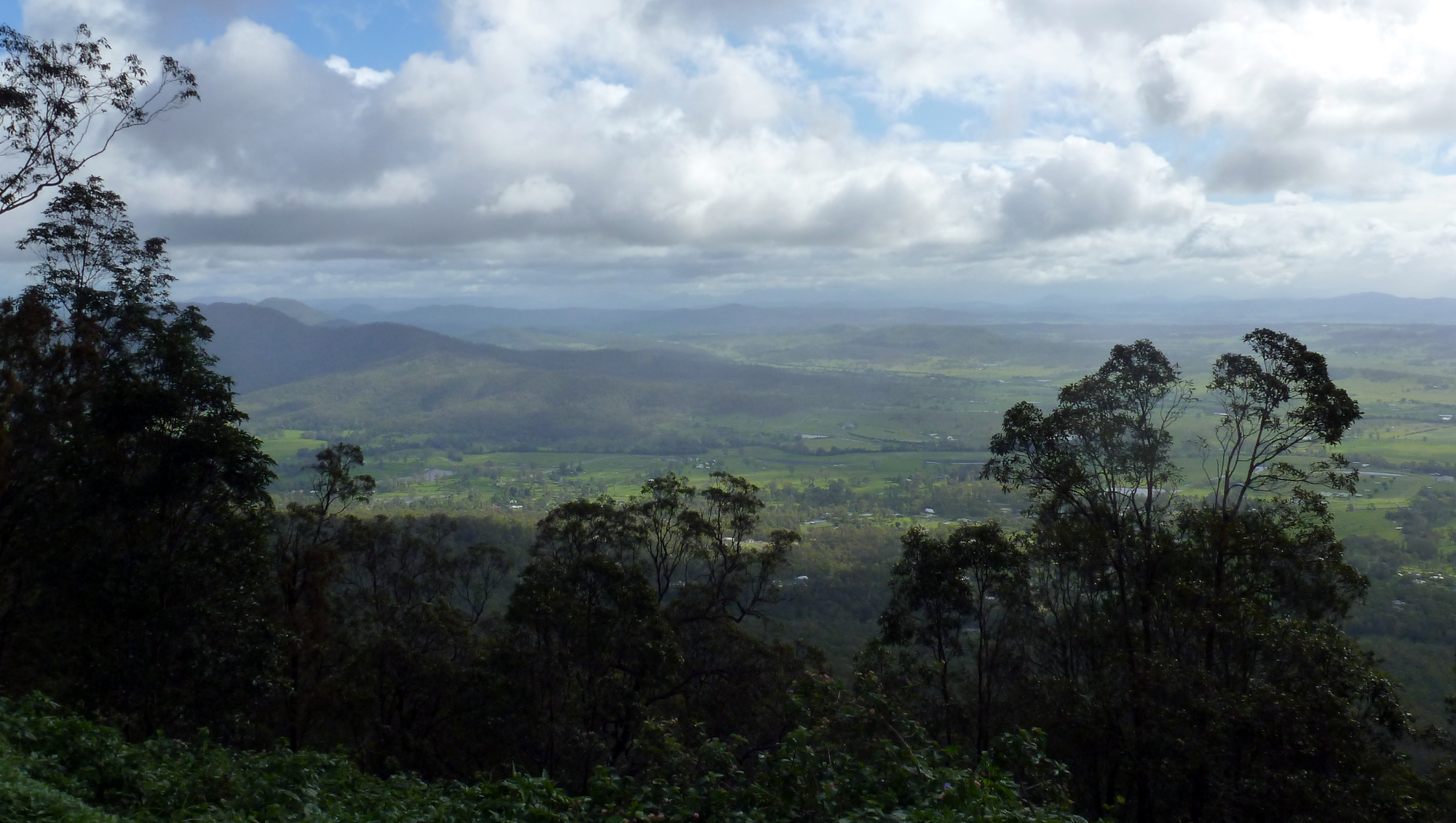
Tamborine Mountain is a 28 square kilometres (11 sq mi) plateau (8 km long by 4 km wide) and locality in the Scenic Rim local government area of South East Queensland, Australia. In the 2011 census, Tamborine Mountain had a population of 7,030 people. The name is of Aboriginal origin and has nothing to do with the musical instrument. It is considered part of the Gold Coast hinterland and has a strong tourist industry.
Australia
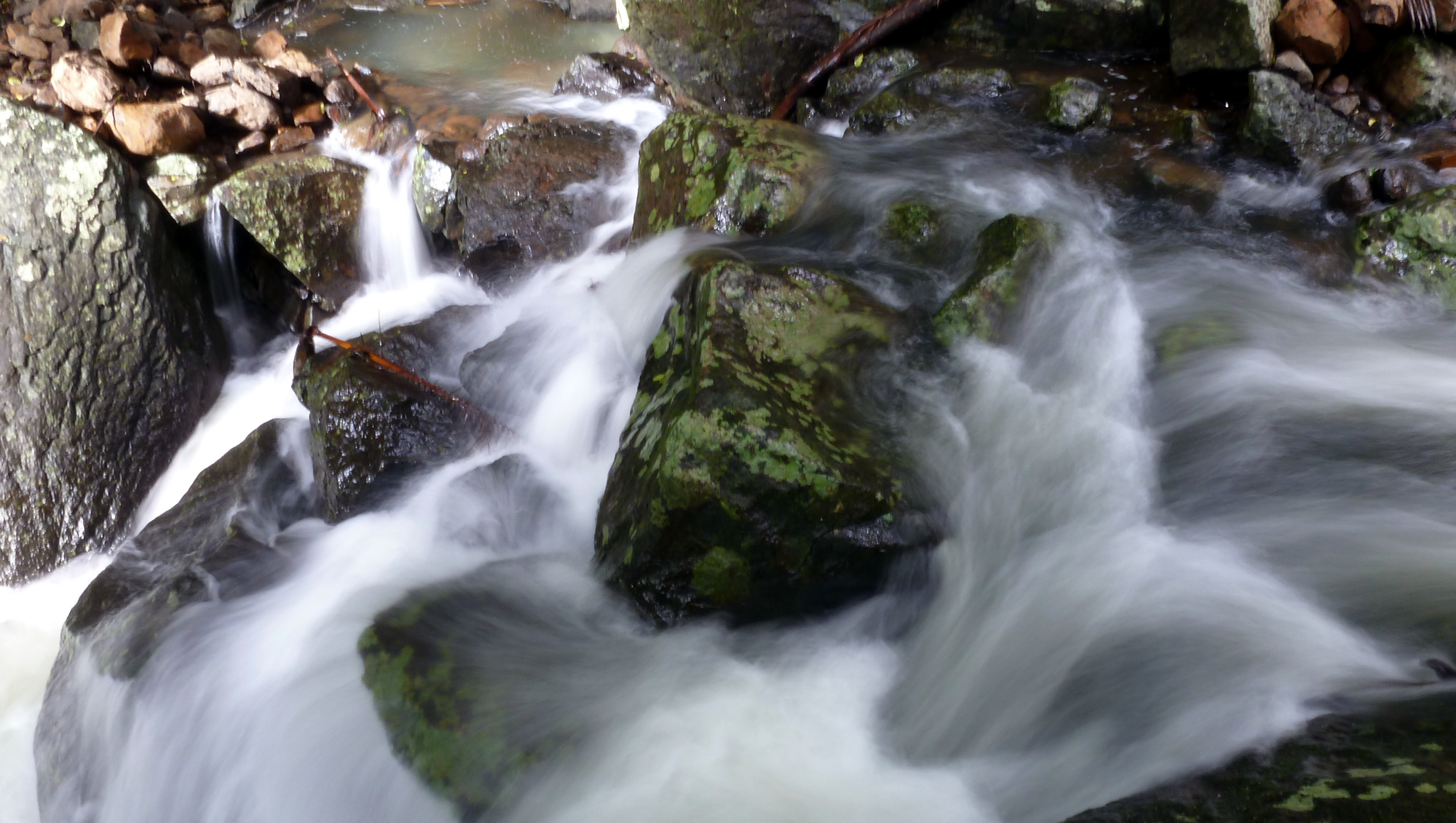
Tamborine is a national park in the Gold Coast hinterland and is apart of the Scenic Rim Regional Council of South East Queensland, Australia, 45 km (28 mi) south of Brisbane.
It covers 11.60 km² on the plateau of Tamborine Mountain and around its foothills. The plateau is 8 km (5.0 mi) long, 5 km (3.1 mi) wide and rises to an altitude of 525 m (1,722 ft). The elevation of the plateau keeps the temperature down a little in summer although December to April is also the wettest time to visit. Winter is drier but also cooler.
The protected area is scattered across 14 separate reserves which make up the National Park, interspersed with villages. There are a number of picnic areas as well as scenic drives and many bushwalks to lookouts, gorges, cliffs, waterfalls, rainforest areas, wet eucalypt forest, open forest and woodlands.
Australia
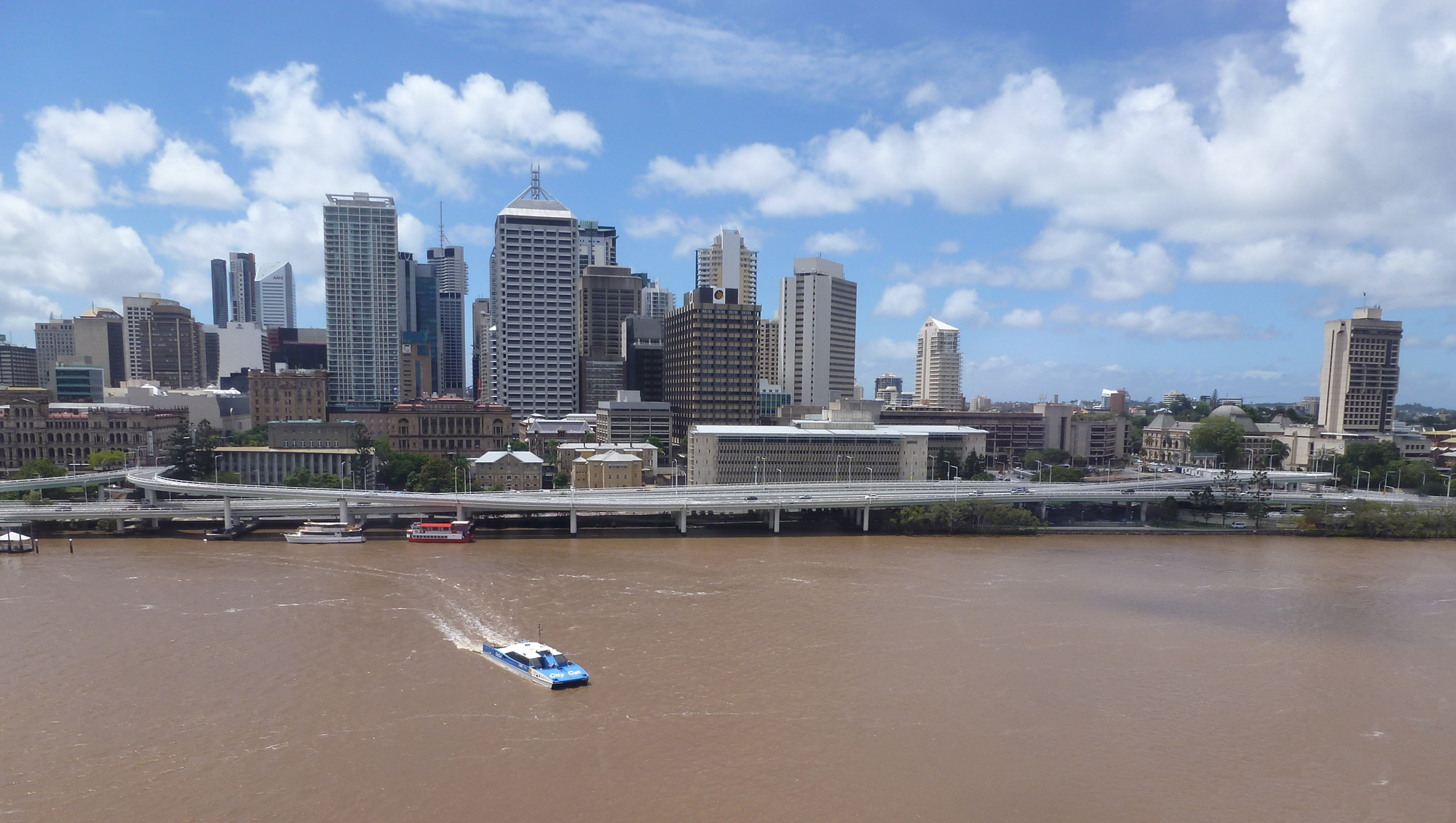
One of the oldest cities in Australia, Brisbane was founded upon the ancient homelands of the Indigenous Turrbal and Jagera peoples. Named after the Brisbane River on which it is located - which in turn was named after Scotsman Sir Thomas Brisbane, the Governor of New South Wales from 1821 to 1825 - the area was chosen as a place for secondary offenders from the Sydney Colony. A penal settlement was founded in 1824 at Redcliffe, 28 kilometres (17 mi) north of the central business district, but was soon abandoned and moved to North Quay in 1825, opening to free settlement in 1842. The city was marred by Aboriginal conflict between 1843-1855, and development was partly set back by the Great Fire of Brisbane, and the Great Brisbane Flood. Brisbane was chosen as the capital when Queensland was proclaimed a separate colony from New South Wales in 1859. During World War II, Brisbane played a central role in the Allied campaign and served as the South West Pacific headquarters for General Douglas MacArthur.
Australia
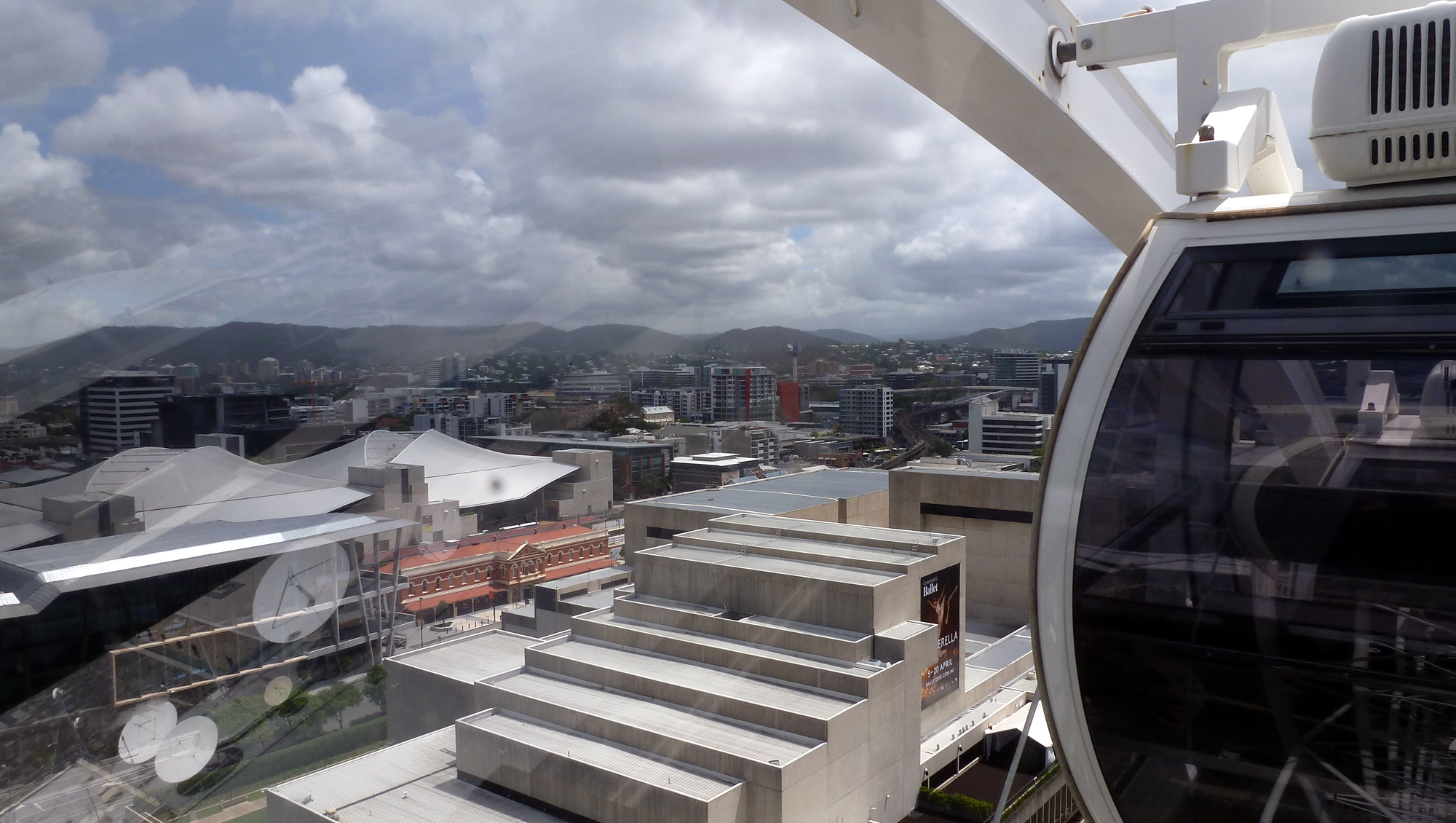
The Wheel of Brisbane is a Bussink R60 transportable Ferris wheel installation in Brisbane, Queensland, Australia. It is "almost" 60 metres (197 ft) tall.
It was erected in 2008 at the northern entrance to South Bank Parklands, the transformed World Expo 88 site by the Brisbane River, as part of the 20th anniversary of World Expo 88 and the 150th anniversary of the State of Queensland 1859–2009 celebrations. Its August opening coincided with the annual Riverfire event.
Each of the 42 air-conditioned capsules can seat up to six adults and two children providing a total passenger capacity of 336. The ride lasts for approximately 12 minutes and provides 360° views across the city.
Australia
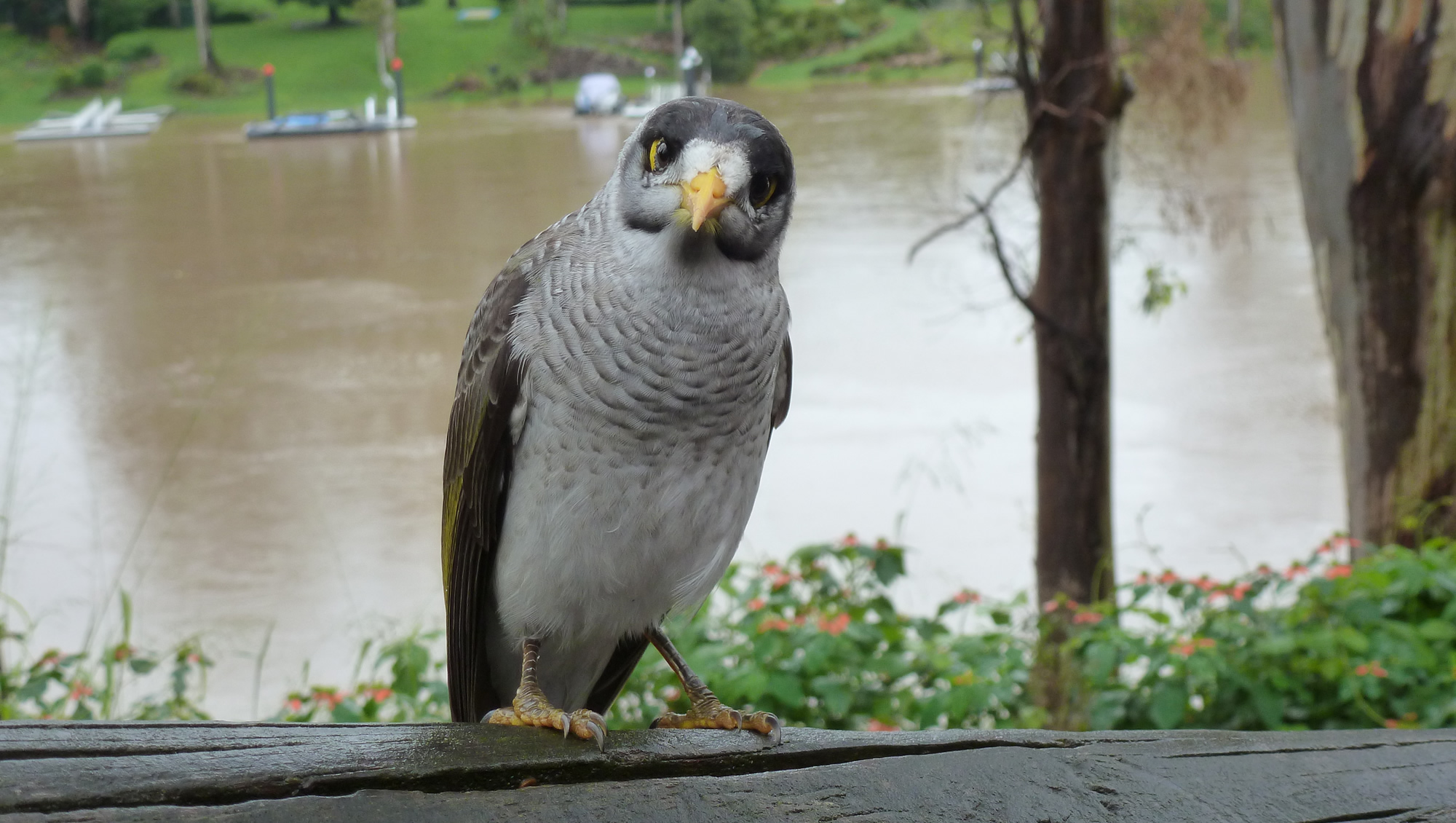
The noisy miner (Manorina melanocephala) is a bird in the honeyeater family, Meliphagidae, and is endemic to eastern and south-eastern Australia. This miner is a grey bird, with a black head, orange-yellow beak and feet, a distinctive yellow patch behind the eye and white tips on the tail feathers. The Tasmanian race has a more intense yellow panel in the wing, and a broader white tip to the tail. Males, females and juveniles are similar in appearance, though young birds are a brownish-grey. As the common name suggests, the noisy miner is a vocal species with a large range of songs, calls, scoldings and alarms, and almost constant vocalizations particularly from young birds. One of four species in the genus Manorina, the noisy miner itself is divided into four subspecies. The separation of the Tasmanian M. m. leachi is of long standing, and the mainland birds were further split in 1999.
Singapore

The National Orchid Garden, located within the Singapore Botanic Gardens, was opened on 20 October 1995 by Singapore's Minister Mentor Lee Kuan Yew.
The Singapore Botanic Gardens has been developed along a 3-Core Concept. The three Cores consist of Tanglin, which is the heritage core that retains the old favourites and rustic charms of the historic Gardens; Central, which is the tourist belt of the Gardens; and Bukit Timah, which is the educational and recreational zone. Each Core offers an array of attractions.
The National Orchid Garden is located in the Central Core of the gardens.
Singapore

The Singapore Botanic Gardens is a 156-year-old tropical garden located at the fringe of the Singapore's main shopping belt. It is one of three gardens, and the only tropical garden, to be honored as a UNESCO World Heritage Site. The Botanic Gardens has been ranked Asia's top park attraction since 2013, by TripAdvisor Travellers' Choice Awards. It was declared the inaugural Garden of the Year, International Garden Tourism Awards in 2012, and received Michelin’s three-star rating in 2008.
Singapore

Paphiopedilum lowii is a species of orchid endemic to western and central Malaysia.
Plants are found growing on mossy trees or large rocks usually near water in Borneo, Sumatra, Java, and Indonesia at elevations of 200 to 1700 meters. The area is subjected to light rain in the winter and heavy rain in the summer.
Singapore

Singapore, officially the Republic of Singapore, and often referred to as the Lion City, the Garden City, and the Red Dot, is the world's only sovereign island city-state. It lies one degree (137 km) north of the equator, at the southernmost tip of continental Asia and peninsular Malaysia, with Indonesia's Riau Islands to the south. Singapore's territory consists of the diamond-shaped main island and 62 islets. Since independence, extensive land reclamation has increased its total size by 23% (130 km2), and its greening policy has covered the densely populated island with tropical flora, parks and gardens.
Singapore

The Merlion (Malay: Singa-Laut) is a traditional creature in western heraldry that depicts a creature with a lion's head and a body of a fish.
In Singapore, it has become a marketing icon used as a mascot and national personification of Singapore.
Merlions do not feature in any local folklore or myths of Singapore, and was only used in Singapore initially as the logo for the tourism board.
The merlion occurs in a number of different artistic traditions. Lions with fishtails can be found on Indian murals at Ajanta and Mathura, and on Etruscan coins of the Hellenistic period. Merlions, or 'heraldic sea-lions', are an established element of Western heraldry, and have been used on the coat of arms of the cities of Portsmouth and Great Yarmouth in the United Kingdom; the City of Manila; and the East India Company.
Singapore
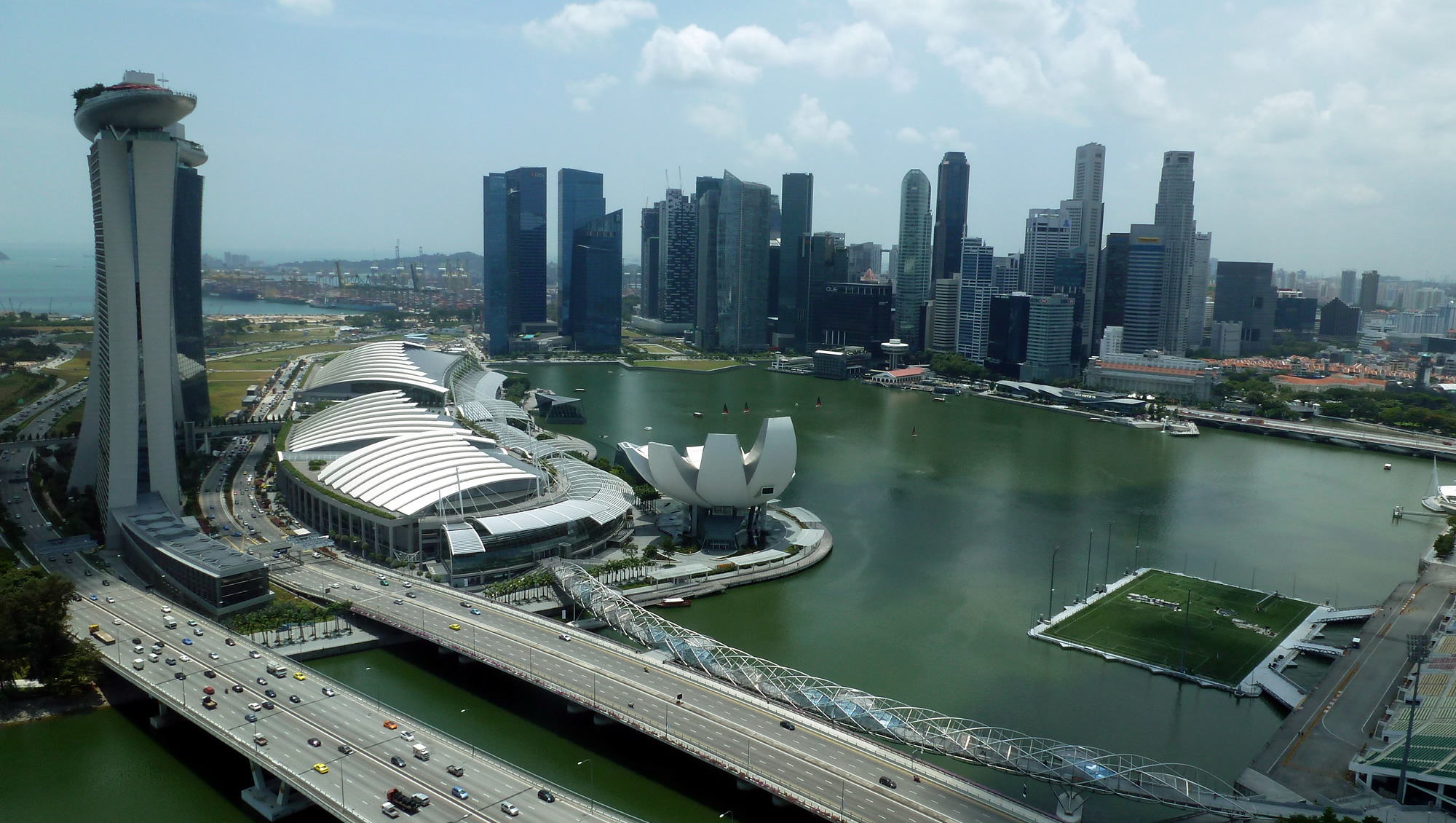
The Singapore Flyer is a giant Ferris wheel in Singapore. Described by its operators as an observation wheel, it opened in 2008, construction having taken about 2½ years. It carried its first paying passengers on 11 February, opened to the public on 1 March, and was officially opened on 15 April. It has 28 air-conditioned capsules, each able to accommodate 28 passengers, and incorporates a three-storey terminal building.
The Flyer has an overall height of 165 metres (541 ft) and was the world's tallest Ferris wheel until the 167.6 m (550 ft) High Roller, which is 2.6 m (9 ft) taller than the Flyer, opened on the Las Vegas Strip in Nevada, US, on 31 March 2014. The previous record holder, the Star of Nanchang, in Jiangxi, China, is 160 m (525 ft) tall, although its 153 m (502 ft) diameter wheel is larger than the Flyer's 150 m (492 ft) wheel.
Singapore

Clarke Quay was named after Sir Andrew Clarke, Singapore's second Governor and Governor of the Straits Settlements from 1873 to 1875, who played a key role in positioning Singapore as the main port for the Malay states of Perak, Selangor and Sungei Ujong.
Clarke Quay is also the name of a road along the quay, part of which has since been converted into a pedestrian mall. Clarke Street, located next to Clarke Quay, was officially named in 1896, and was originally two streets known simply as East Street and West Street in north Kampong Malacca. Similar to Clarke Quay, Clarke Street has since been converted into a pedestrian mall.
Singapore
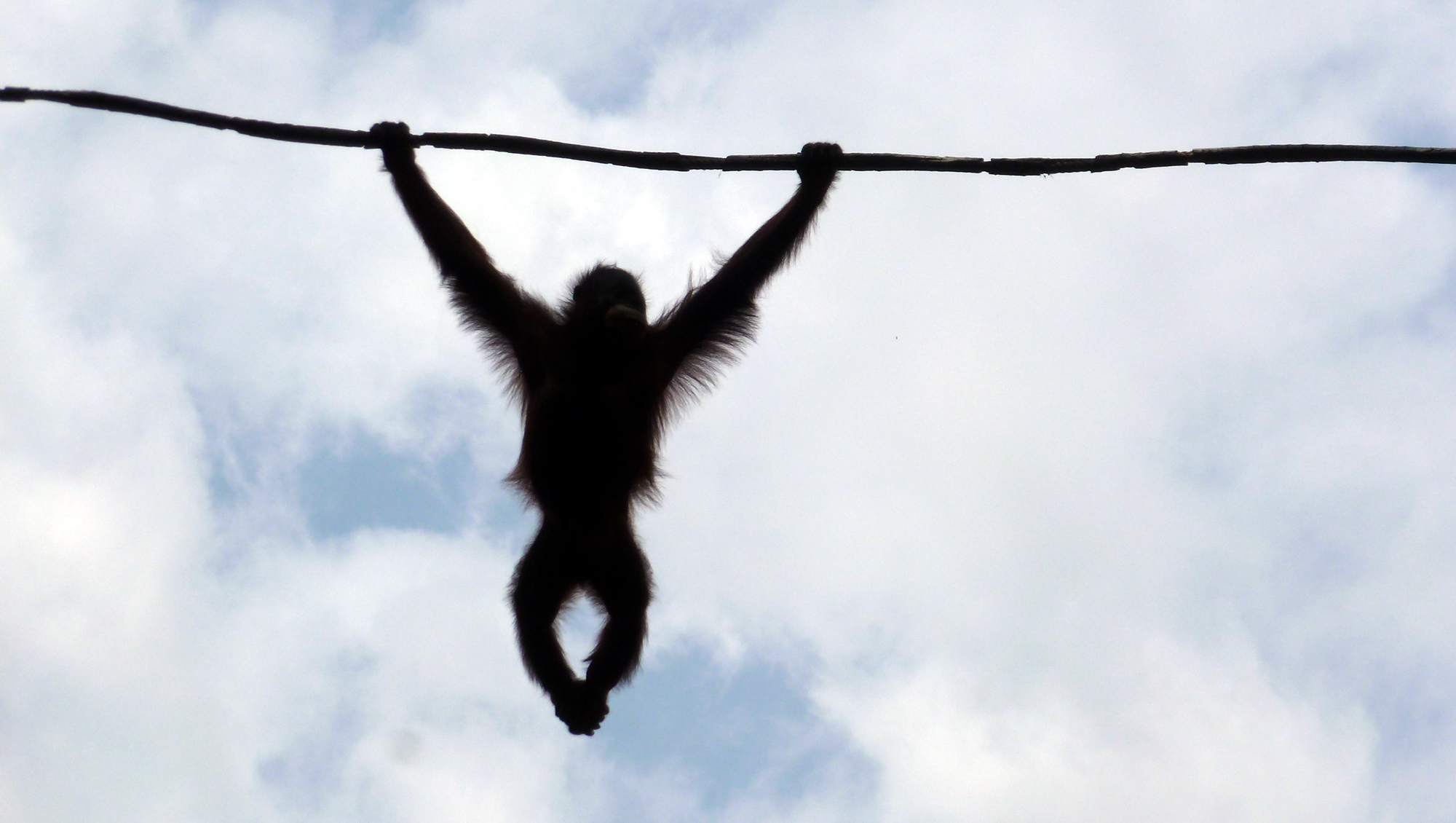
Singapore Zoo, located in the north of the island at Mandai, has the world's most successful orangutan-breeding program, and the largest social colony of these highly intelligent primates.
Singapore
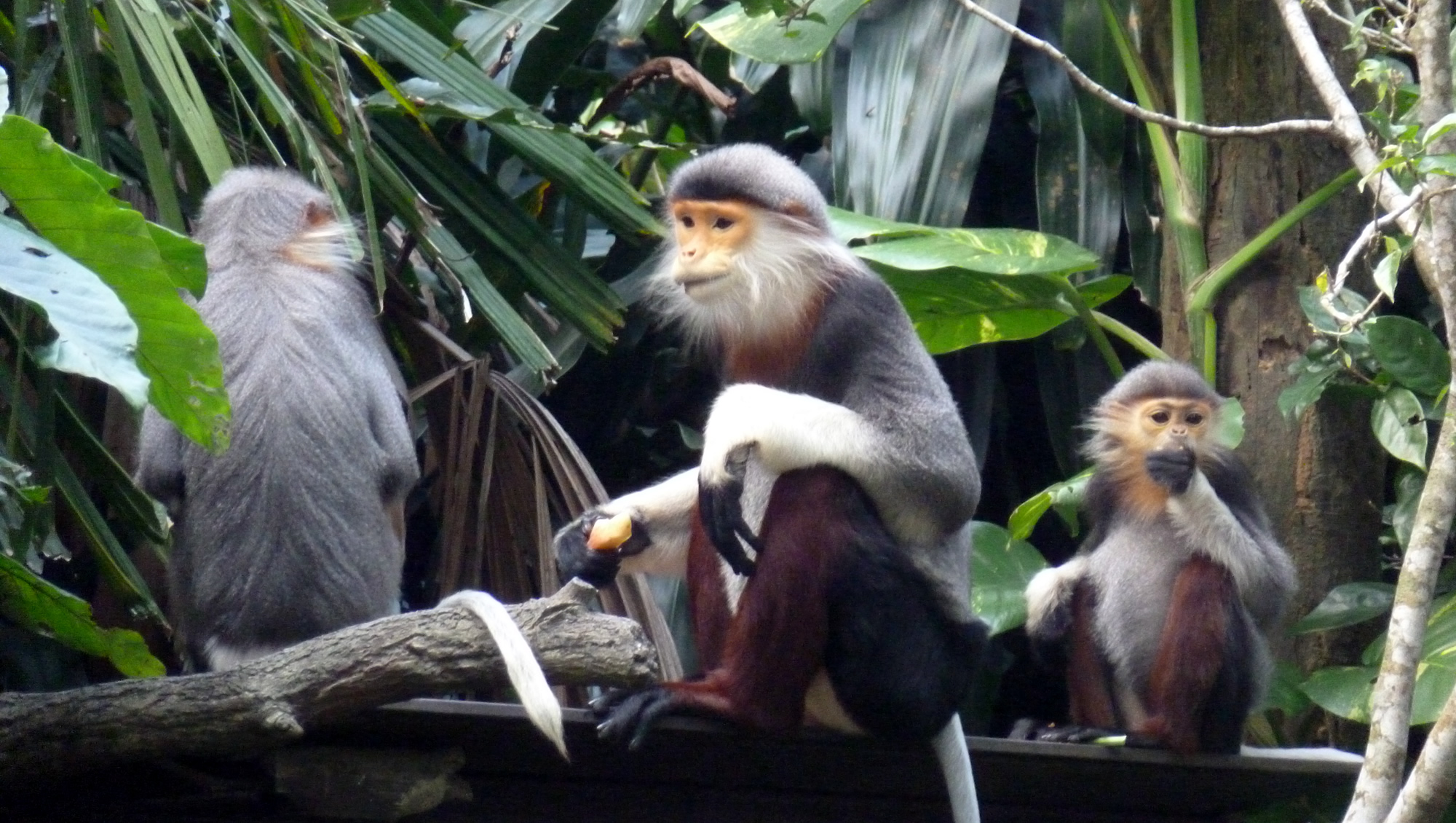
These colobine Old World monkeys, native to Southeast Asia, have an extremely striking appearance. The red-shanked douc characteristically has bright maroon legs and reddish patches around the eyes. In contrast, the grey-shanked douc is less vibrant, with speckled grey legs and orange markings on the face. Both have dappled grey bodies, black hands and feet and white cheeks, although the cheek hairs of the red-shanked douc are much longer. The black-shanked douc has black legs. Their long hind limbs and tail allow these monkeys to be very agile in their treetop habitat.